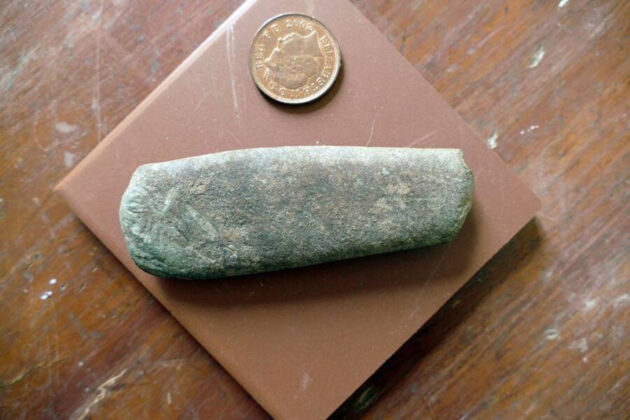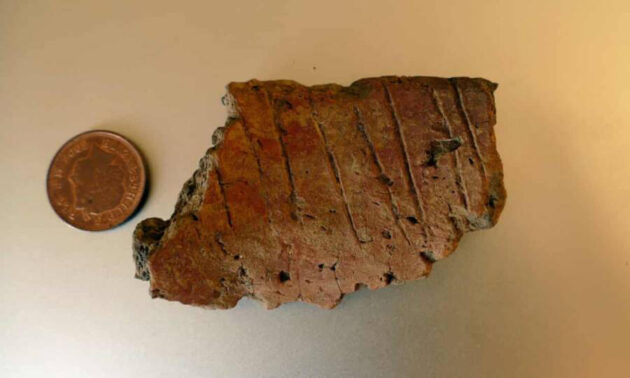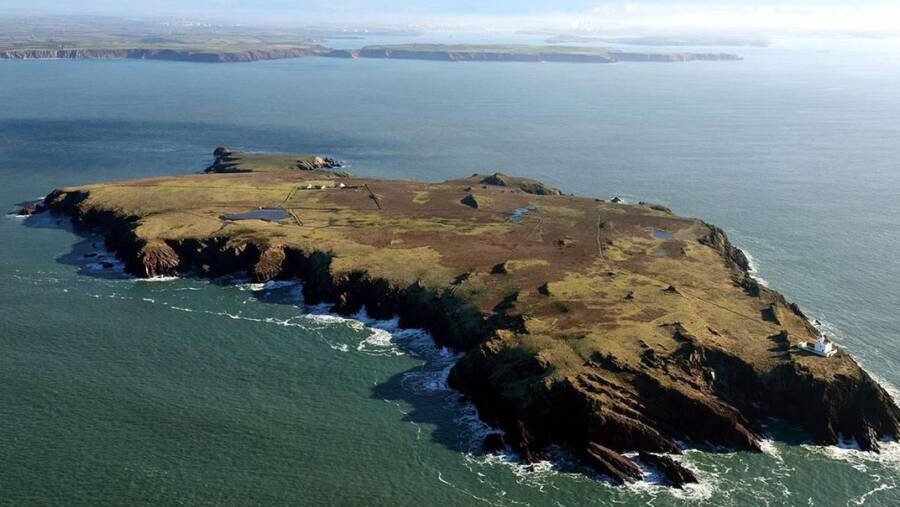Some of the most stunning archaeological finds are the results of serendipity. Bedouin shepherd boys stumbling on the cave of the Dead Sea Scrolls. A Napoleonic soldier tripping over the partly-buried Rosetta Stone.
A warren of bunnies digging up prehistoric British tools.
In a first-of-its-kind discovery this month, a herd of rabbits accidentally found a cache of 9,000-year-old Stone and Bronze Age artifacts buried on the remote Welsh island of Skokholm.
Like many remote islands, Skokholm is today occupied only by caretakers. Seabird experts Richard Brown and Giselle Eagle are its only current inhabitants.

According to The Guardian, Brown and Eagle were making their usual patrol of the area when they discovered an artifact at the entrance of a rabbit burrow right by the island’s cottage.
The wardens sent pictures of the piece to experts on the mainland, who identified it as a Mesolithic tool.
The tool was what researchers call a “beveled pebble,” and has since been estimated to be around 6,000 to 9,000 years old. Experts believe it was used by Stone Age hunter-gatherers to craft boats out of seal hides as well as to prepare foods like shellfish […] just a day later, Brown and Eagle spotted a second round of items at the entrance to the same rabbit burrow which included yet another Mesolithic-era stone tool and sizable pieces of pottery.
The wardens sent photos of these to the curator of prehistoric archaeology at the National Museum of Wales, Jody Deacon. She identified the pottery pieces as relics from a 3,750-year-old burial urn from the Early Bronze Age.

The Mesolithic (“Middle Stone-Age”) to the Early Bronze Age spans thousands of years.
For Toby Driver, an archaeologist at the Royal Commission of Wales, the discoveries ultimately suggest that the island’s cottage was built atop an ancient burial site which itself was built on top of an even older site.
“Skokholm is producing some amazing prehistoric finds,” he said. “It seems we may have an early Bronze Age burial mound built over a middle Stone Age hunter-gatherer site. It’s a sheltered spot, where the island’s cottage now stands and has clearly been settled for millennia.”
The find is all the more remarkable for being found on such a remote, tiny island. Its very name is a testament to the shifting history of Britain, showing that Viking marauders reached even the most distant parts of Britain.
While it’s barely a mile long and half a mile across, Skokholm Island has a fascinating history. The name itself is Norse, given by the Vikings who settled there in the late 10th or early 11th century. Then, Skokholm became a rabbit farm around the 15th century.
In 2006, the Wildlife Trust of South and West Wales purchased the isle in order to conserve it as a national nature reserve.
All That’s Interesting
History continues to shape events on the island. A planned full archaeological survey is on hold until the pandemic lockdowns are lifted.
Please share this article so that others can discover The BFD

